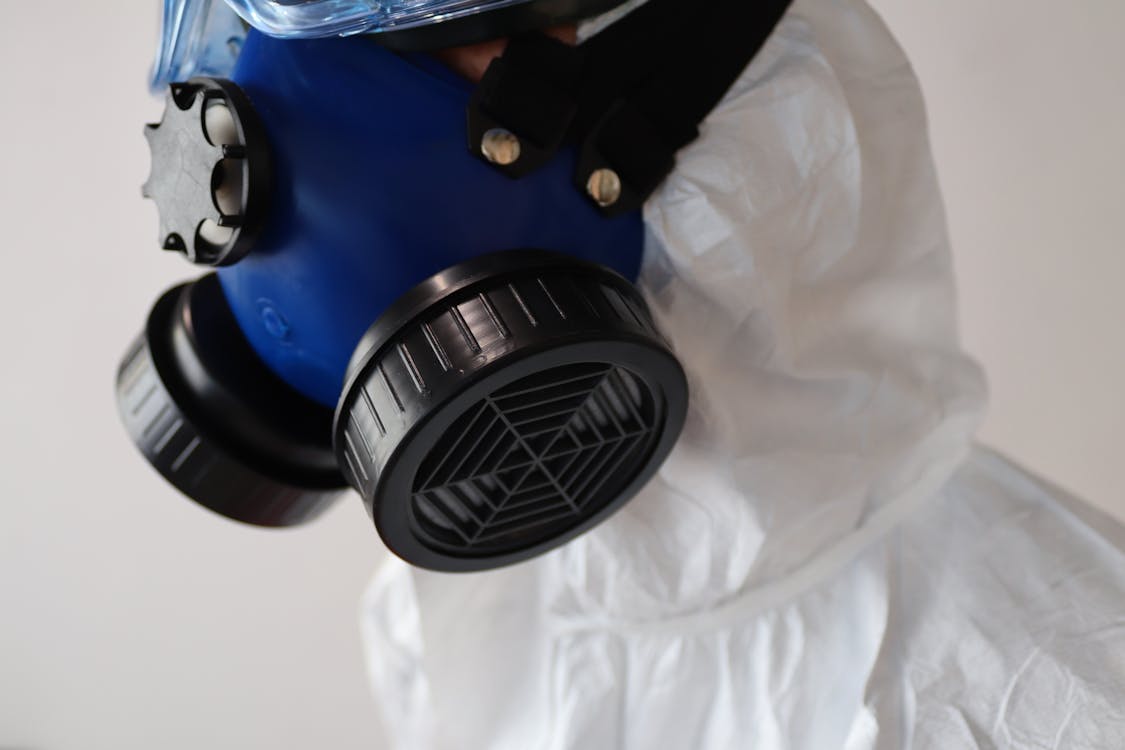Environmental toxins are chemicals that are found in the environment and can have negative effects on human health. Exposure to environmental toxins can have both short-term and long-term effects on the body.
While short-term effects may be immediately apparent, long-term effects may take years or even decades to manifest. In this article, we will explore the long-term effects of exposure to environmental toxins and what steps can be taken to minimize the risk of exposure.

What are Environmental Toxins?
Environmental toxins are chemicals that can be found in the air, water, soil, and food. These toxins can come from a variety of sources, such as industrial pollution, pesticides, and household cleaning products. Exposure to these toxins can occur through inhalation, ingestion, or skin contact.
Short-term Effects of Exposure to Environmental Toxins
Short-term effects of exposure to environmental toxins can include irritation of the skin, eyes, and respiratory system, headaches, dizziness, and nausea. In severe cases, exposure to certain toxins can cause acute poisoning, which can result in death.
Long-term Effects of Exposure to Environmental Toxins
Exposure to environmental toxins over a long period of time can have serious and lasting effects on human health. The long-term effects of exposure to environmental toxins can include:
Cancer
Exposure to certain environmental toxins, such as asbestos, radon, and benzene, can increase the risk of developing cancer. These toxins can damage DNA and disrupt normal cell function, which can lead to the development of cancerous cells.
Respiratory Diseases
Exposure to environmental toxins, such as air pollution and secondhand smoke, can increase the risk of developing respiratory diseases, such as asthma and chronic obstructive pulmonary disease (COPD). These toxins can irritate the lungs and airways, leading to inflammation and damage to lung tissue.
Neurological Disorders
Exposure to environmental toxins, such as lead and mercury, can have negative effects on the nervous system. These toxins can interfere with the normal function of the brain and nervous system, leading to a range of neurological disorders, such as Parkinson’s disease and Alzheimer’s disease.
Reproductive and Developmental Disorders
Exposure to environmental toxins, such as pesticides and phthalates, can have negative effects on reproductive and developmental health. These toxins can interfere with the normal function of hormones, leading to infertility, miscarriage, and developmental disorders in children.
Cardiovascular Disease
Exposure to environmental toxins, such as air pollution and lead, can increase the risk of developing cardiovascular disease. These toxins can damage blood vessels and cause inflammation, leading to a range of cardiovascular disorders, such as hypertension and heart disease.

Minimizing the Risk of Exposure to Environmental Toxins
While it may be impossible to completely avoid exposure to environmental toxins, there are steps that can be taken to minimize the risk of exposure. These steps include:
Eating a Healthy Diet
Eating a healthy diet that is rich in fruits, vegetables, and whole grains can help to minimize the risk of exposure to environmental toxins. These foods are high in antioxidants and other nutrients that can help to protect the body from the negative effects of toxins.
Using Safe Cleaning Products
Using safe cleaning products, such as those that are free of harsh chemicals and toxins, can help to minimize the risk of exposure to environmental toxins in the home.
Reducing Exposure to Air Pollution
Reducing exposure to air pollution, such as avoiding areas with high levels of traffic or industrial pollution, can help to minimize the risk of exposure to environmental toxins.

Testing for Toxins
Testing for toxins in the home, such as lead and radon, can help to identify and mitigate the risk of exposure to these
Using Protective Equipment
Using protective equipment, such as gloves and masks, can help to minimize the risk of skin contact and inhalation of environmental toxins in the workplace.
Proper Disposal of Hazardous Materials
Proper disposal of hazardous materials, such as batteries and electronics, can help to minimize the risk of exposure to environmental toxins in the environment.

H3: The Importance of Regular Testing
Regular testing for environmental toxins is an important step in minimizing exposure and preventing long-term health effects. Testing can identify potential sources of contamination and allow for prompt action to be taken to address the issue.
Testing for Lead
Testing for lead is particularly important, as it is a common environmental toxin that can have serious health effects, especially in children. Blood lead level testing can identify elevated levels of lead in the bloodstream, which can lead to developmental delays, behavioral problems, and other health issues.
Testing for Radon
Radon is a radioactive gas that is produced naturally in the soil and can seep into homes and buildings. Long-term exposure to radon can increase the risk of lung cancer. Testing for radon is important for identifying potential sources of contamination and taking steps to mitigate the risk.
Testing for Mold
Mold is a common environmental toxin that can cause respiratory symptoms, headaches, and other health issues. Testing for mold can identify the presence of mold in homes and buildings and allow for prompt remediation to prevent further exposure.
H2: Preventing Exposure to Environmental Toxins
Preventing exposure to environmental toxins is an important step in minimizing the risk of long-term health effects. Here are some ways to prevent exposure:
Eating a Healthy Diet
Eating a healthy diet can help to minimize exposure to environmental toxins by reducing the consumption of processed and packaged foods that may contain harmful additives and chemicals.
Using Safe Cleaning Products
Many conventional cleaning products contain harsh chemicals that can be harmful when inhaled or absorbed through the skin. Using natural and non-toxic cleaning products can help to minimize exposure to these harmful chemicals.
Reducing Exposure to Air Pollution
Exposure to air pollution can have serious health effects, including respiratory diseases and cancer. Reducing exposure to air pollution can be done by avoiding areas with high levels of pollution, using air filters in homes and workplaces, and choosing low-emission transportation options.

H1: What are the Long-Term Effects of Exposure to Environmental Toxins?
Exposure to environmental toxins can have serious long-term effects on human health. Here are some of the potential health effects of exposure to environmental toxins:
Cancer
Exposure to certain environmental toxins, such as asbestos, benzene, and radon, can increase the risk of cancer.
Respiratory Diseases
Exposure to air pollution and other environmental toxins can increase the risk of respiratory diseases, such as asthma, chronic obstructive pulmonary disease (COPD), and lung cancer.
Neurological Disorders
Exposure to certain environmental toxins, such as lead and mercury, can cause neurological disorders, including developmental delays, behavioral problems, and cognitive impairment.
Reproductive and Developmental Disorders
Exposure to certain environmental toxins, such as phthalates and bisphenol-A (BPA), can affect reproductive health and cause developmental disorders in children.
Cardiovascular Disease
Exposure to air pollution has been linked to an increased risk of cardiovascular disease, including heart attacks and stroke.
Conclusion
Exposure to environmental toxins can have serious and lasting effects on human health, including cancer, respiratory diseases, neurological disorders, reproductive and developmental disorders, and cardiovascular disease. While it may be impossible to completely avoid exposure to environmental toxins, steps can be taken to minimize the risk of exposure, such as eating a healthy diet, using safe cleaning products, reducing exposure to air pollution, testing for toxins, using protective equipment, and proper disposal of hazardous materials.
FAQs
- What are the most common environmental toxins?
The most common environmental toxins include lead, mercury, asbestos, benzene, and phthalates.
- How do environmental toxins affect the body?
Environmental toxins can affect the body by damaging DNA, disrupting normal cell function, and interfering with the function of hormones and the nervous system.
- Can exposure to environmental toxins be reversed?
The effects of exposure to environmental toxins may be reversible in some cases, but in many cases, the effects are lasting and may not be fully reversible.
- What are some signs of exposure to environmental toxins?
Signs of exposure to environmental toxins may include skin irritation, respiratory symptoms, headaches, dizziness, and nausea.
- How can I minimize my exposure to environmental toxins?
Steps to minimize exposure to environmental toxins include eating a healthy diet, using safe cleaning products, reducing exposure to air pollution, testing for toxins, using protective equipment, and proper disposal of hazardous materials.